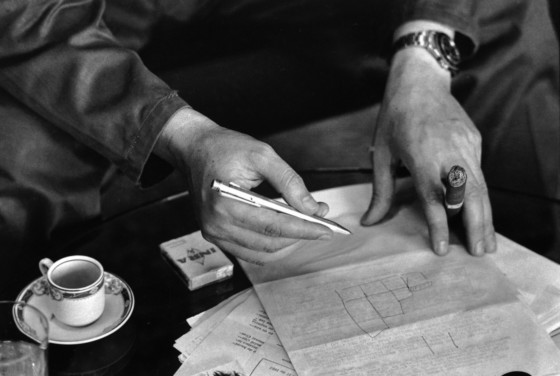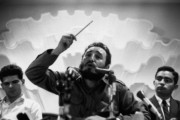Behind the Image: Che Guevara by René Burri
On the 50th anniversary of Che Guevara's death, we present the story behind the making of an historic photograph that became an emblem for those who idolized the revolutionary
On October 9th, 1967, professional revolutionary Ernesto Guevara de la Serna, better known as Che Guevara, was executed by Bolivian armed forces. Che Guevara, the Argentine-born Marxist revolutionary and Cubanguerrilla leader, became part of Fidel Castro’s efforts to overthrow the Batista government in Cuba. Later, he became president of the Cuban national bank and encouraged a shift of the country’s trade relations from the United States to the Soviet Union. Three years later, he was appointed minister of industry. Guevara left this post in 1965 to export the ideas of Cuba’s revolution to other parts of the world. In 1966, he began to try to incite the people of Bolivia to rebel against their government, but was captured and killed in La Higuera by the Bolivian army on October 9, 1967.
In 1962 René Burri visited Havana on commission for Look magazine. One of the resultant portraits of Guevara smoking a cigar became an iconic image of the 20th century. For the book Contact Sheets, René Burri told the story behind the photograph:
“I arrived with the US reporter Laura Berquist from Look magazine. Che had invited her when they met at the end of 1962 in New York. I immediately realized that the blinds were closed. Since this posed a technical problem, I asked him, ‘May I open the blinds?’ And he said, ‘No, it’s not necessary.’ Only later did I realize that he was so focused on what he was doing that he didn’t want to see what was going on outside.
"Only later did I realize that he was so focused on what he was doing that he didn’t want to see what was going on outside."
- René Burri
The interview began right away, and after a while they simply ignored me. The conversation became heated. Sometimes he would speak with a certain charm, but sometimes he would grab some papers. I have a photo of him jotting down figures. From time to time he would get up and leave, and he would always come back wearing his officer’s boots and combat fatigues. I remember that when he bit off the tip of his cigar, I expected him to offer me one, but he was so immersed in the discussion, which was lucky for me because I was simply ignored for two whole hours. He never once looked at me, which was extraordinary. I was moving all around him, and there isn’t a single photograph in which he appears looking at the camera.
"…when I returned to Havana, I saw my photo on T-shirts at the Ministry of Information, and I even bought some for my children.
"
- René Burri
Magnum distributed the story all over the world. In 1966, some friends asked me, ‘René, can we make a poster?’ And they made a huge poster framed exactly like Che’s photograph. And from that moment on, it all began. People wanted to have the photo. The real boom was in Paris, in May 1968, when the photo appeared on flags. Later, when I returned to Havana, I saw my photo on T-shirts at the Ministry of Information, and I even bought some for my children. I told the salesperson, ‘That photo is mine!’ And I bought my T-shirts.
I regret not having seen Che again. To me what really matters is to preserve his image as a visionary, as a man who was willing to go to the very end. I believe the struggle continues.”
























